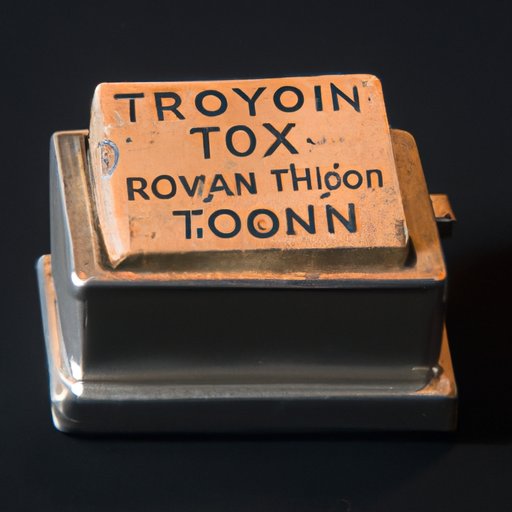Introduction
If you work with precious metals, you may have encountered the dilemma of converting between troy ounces and troy pounds. It can be frustrating to not know how many ounces are in a troy pound, especially when accuracy is crucial. But fear not! In this comprehensive guide, we will explain everything you need to know about troy ounces and troy pounds, and offer step-by-step instructions on how to convert between them with ease.
Troy Ounces Explained
Troy ounces are a unit of measurement used in the weighing of precious metals such as gold, silver, and platinum. A troy ounce is slightly heavier than a regular or avoirdupois ounce, with one troy ounce weighing 31.1035 grams, while one avoirdupois ounce weighs 28.3495 grams.
The troy weight system dates back to medieval times and was named after the French city of Troyes, where it was believed to have originated. It was widely used in Europe for trading precious metals and was later adopted by the British Empire and the United States.
Troy Pounds Explained
Like troy ounces, troy pounds are also a unit of measurement used in the weighing of precious metals. One troy pound is equivalent to 12 troy ounces, which means that a troy pound weighs 373.24 grams.
If you’re wondering why precious metals are weighed in troy ounces and pounds instead of regular ounces and pounds, the answer lies in its historical origins. The troy weight system was specifically designed for the weighing of precious metals, making it more accurate and consistent than other systems of measurement.
Converting Between Troy Ounces and Troy Pounds
Converting between troy ounces and troy pounds may seem daunting, but it’s actually quite simple. To convert troy ounces to troy pounds, divide the number of troy ounces by 12. To convert troy pounds to troy ounces, multiply the number of troy pounds by 12.
For example, let’s say you have 36 troy ounces of gold and want to know how many troy pounds it is. Simply divide 36 by 12, which equals 3 troy pounds. Similarly, if you have 5 troy pounds of silver and want to know how many troy ounces it is, just multiply 5 by 12, which equals 60 troy ounces.
Importance of Knowing Troy Ounces and Troy Pounds
Knowing how to accurately measure and convert between troy ounces and troy pounds is essential for those who work with precious metals, such as jewelers, refiners, and investors. Inaccurate measurements can lead to financial losses and can even potentially harm one’s reputation in the industry. Understanding troy ounces and troy pounds can also help ensure fair transactions when buying and selling precious metals.
For example, a jeweler may need to order a specific amount of gold to make a custom piece for a client. Overestimating or underestimating the amount of gold needed could be costly and time-consuming. Additionally, an investor may need to calculate the value of their precious metal holdings, and a small mistake in measurement can result in a significant difference in the overall value of their investment.
Tips and Tricks for Accurate Measurement
When measuring precious metals in troy ounces and pounds, accuracy is key. Here are a few tips to ensure that you’re getting the most precise measurements possible:
- Use an accurate scale specifically designed for weighing precious metals.
- Ensure that the scale is properly calibrated before each use.
- Handle the metal carefully to avoid any contamination or loss.
- Keep precise records of your measurements for future reference.
It’s also important to be aware of common mistakes people make when measuring precious metals, such as using the wrong scale, not properly zeroing out the scale, or not allowing the metal enough time to settle before taking a measurement.
Conclusion
Understanding troy ounces and troy pounds is essential for anyone who works with precious metals. By following the simple steps outlined in this guide, converting between troy ounces and troy pounds should be a breeze. Remember to always handle precious metals with care and to keep accurate records of all measurements for future reference.
